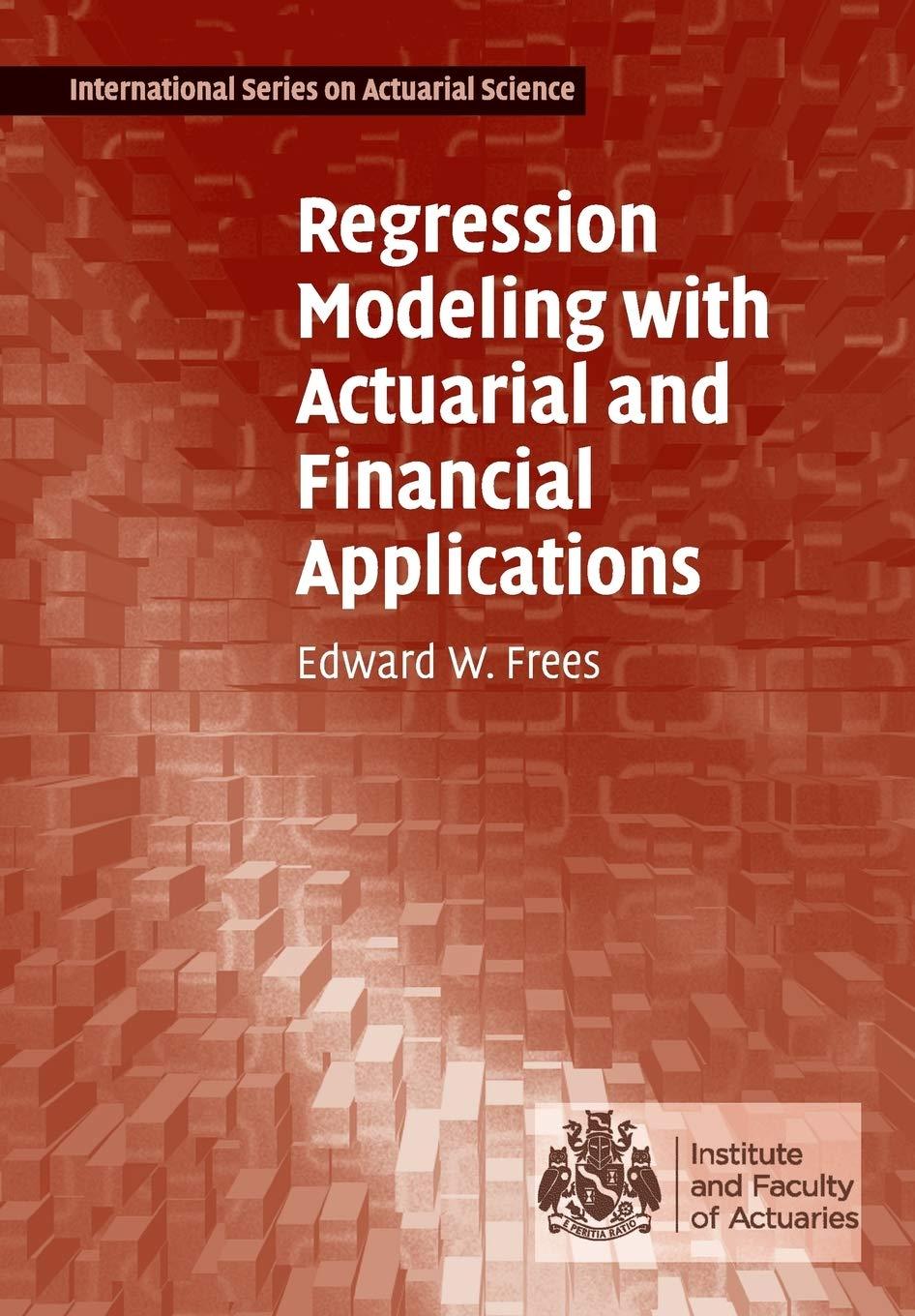Assume that (y) is normally distributed with mean (mu) and variance (sigma^{2}). Let (phi(cdot)) and (Phi(cdot)) be
Question:
Assume that \(y\) is normally distributed with mean \(\mu\) and variance \(\sigma^{2}\). Let \(\phi(\cdot)\) and \(\Phi(\cdot)\) be the standard normal density and distribution functions, respectively. Define \(\mathrm{h}(d)=\phi (d) /(1-\Phi(d))\), a hazard rate. Let \(d\) be a known constant and \(d_{s}=(d-\mu) / \sigma\) be the standardized version.
a. Determine the density of \(y\), conditional on \(\{y>d\}\).
b. Show that \(\mathrm{E}(y \mid y>d)=\mu+\sigma \mathrm{h}\left(d_{s}\right)\).
c. Show that \(\mathrm{E}(y \mid y \leq d)=\mu-\sigma \phi\left(d_{s}\right) / \Phi\left(d_{s}\right)\).
d. Show that \(\operatorname{Var}(y \mid y>d)=\sigma^{2}\left(1-\delta\left(d_{s}\right)\right)\), where \(\delta(d)=\mathrm{h}(d)\) \((\mathrm{h}(d)-d)\).
e. Show that \(\mathrm{E} \max (y, d)=\left(\mu+\sigma \mathrm{h}\left(d_{s}\right)\right)\left(1-\Phi\left(d_{s}\right)\right)+d \Phi\left(d_{s}\right)\).
f. Show that \(\mathrm{E} \min (y, d)=\mu+d-\left(\left(\mu+\sigma \mathrm{h}\left(d_{s}\right)\right)\left(1-\Phi\left(d_{s}\right)\right)+\right.\) \(\left.d \Phi\left(d_{s}\right)\right)\).
Step by Step Answer:

Regression Modeling With Actuarial And Financial Applications
ISBN: 9780521135962
1st Edition
Authors: Edward W. Frees





